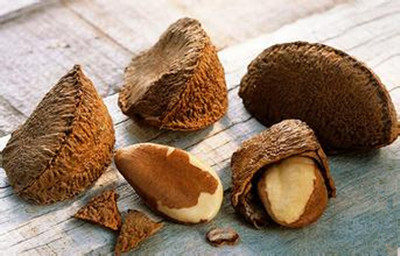Nuts, botanically speaking, are made up of both the seed itself and a hard outer layer that is the fruit, which does not split open when ripe.
從植物學(xué)角度上講,堅(jiān)果是由堅(jiān)硬果皮和內(nèi)含種子組成的果實(shí)。成熟時(shí)外殼也不會(huì)開裂。
Some examples of true nuts are acorns, hazelnuts and chestnuts.
比如橡果,榛子和栗子等就是這樣的堅(jiān)果。
Walnuts, pecans and almonds, in contrast, are edible seeds from a bigger fruit.
相比之下,核桃、胡桃和杏仁則是種子可以食用更大一點(diǎn)的水果。
Most of the inedible fruit is removed at harvest so when you buy walnuts and almonds in the shell, you're buying the seeds enclosed in woody endocarp, which is the remaining layer of the fruit wall.
大多數(shù)不宜食用的水果會(huì)在收獲時(shí)被剔除,因此當(dāng)你購(gòu)買到帶殼的核桃和杏仁,你實(shí)際上買的是仍然在果皮層,封裝在木質(zhì)、堅(jiān)硬內(nèi)果皮里面的種子。
Brazil nuts are also seeds.
同樣巴西堅(jiān)果也是種子。

They come from a capsule like fruit, in which several of the triangular seeds grow inside, arranged like the segments of an orange.
巴西堅(jiān)果有類似水果的莢,內(nèi)部是三角形形狀的種子,就像橙子瓣一樣排列。
Peanuts are the seeds of a legume, or member of the bean family.
花生是豆類的種子,或者豆家族的成員。
Pistachios, cashews, macadamias and pine nuts are all seeds rather than nuts.
開心果、腰果、夏威夷果、松子都是種子,而非堅(jiān)果。












